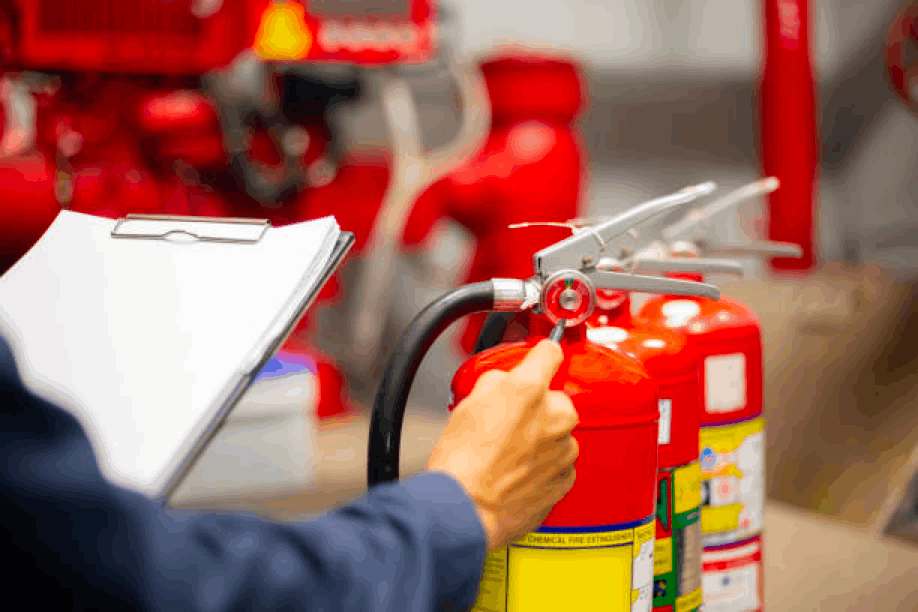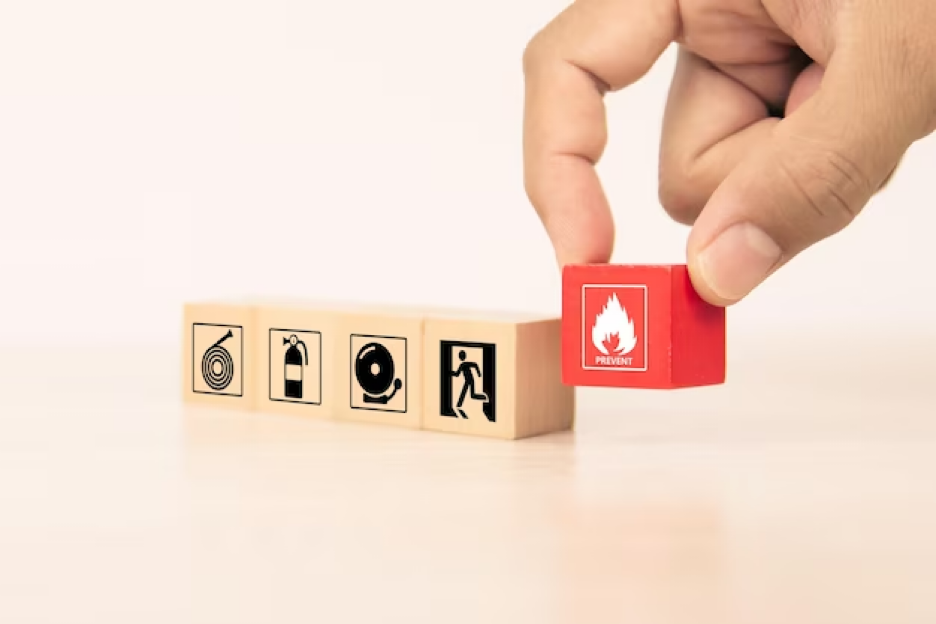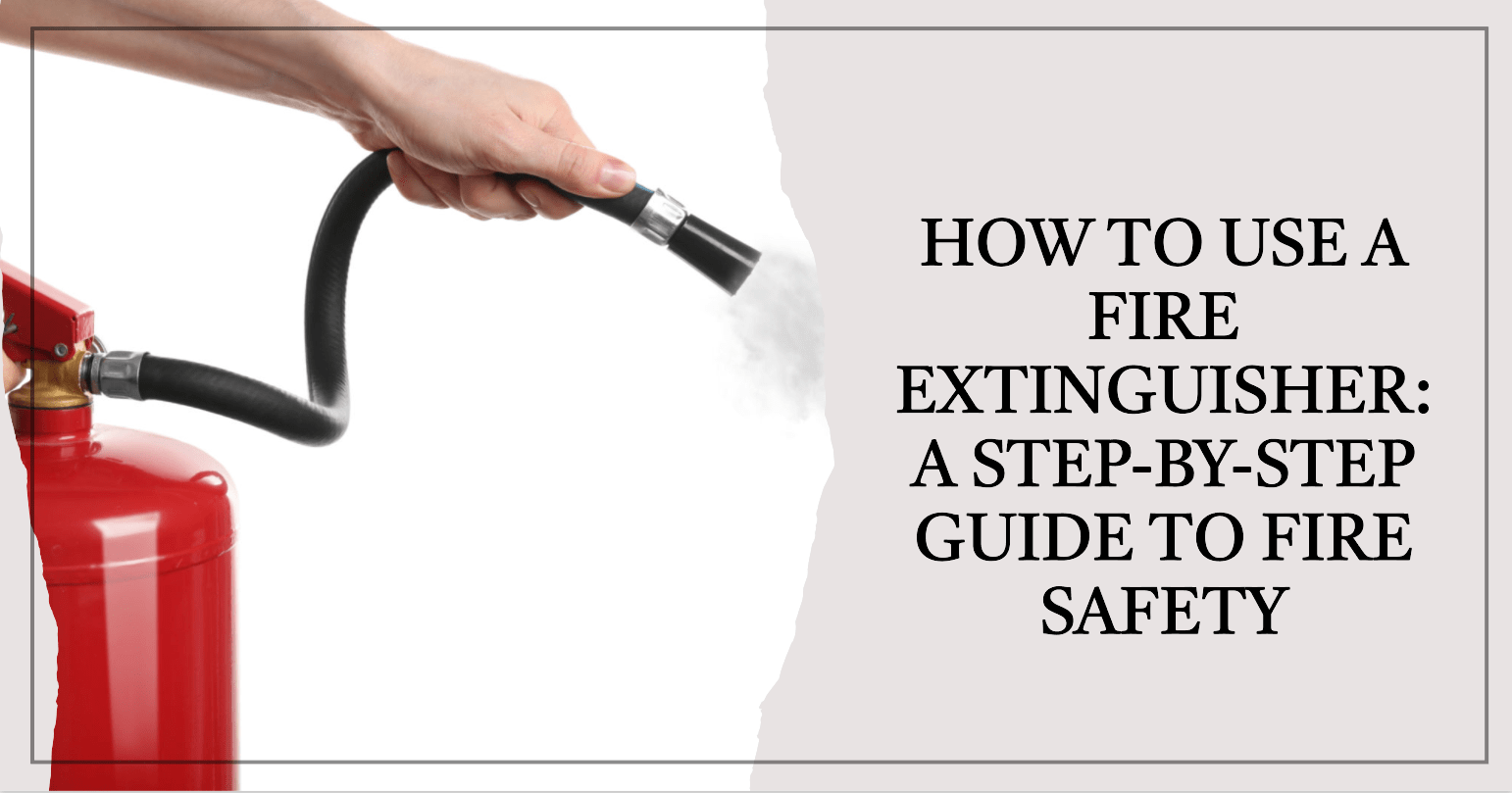Fire safety is a crucial skill that everyone should possess. Being familiar with the proper use of a fire extinguisher can make a significant difference in preventing small fires from escalating into dangerous situations.
In this article, we will provide you with a comprehensive, step-by-step guide on how to effectively use a fire extinguisher to combat a fire safely. Remember, safety should always be your top priority, and if a fire is too large to handle or if you feel unsafe, evacuate immediately and contact emergency services.
Steps on How to Use a Fire Extinguisher

Step 1: Understand the Fire Extinguisher Classes
Fire extinguishers are categorized into different classes based on the type of fire they are designed to handle. The most common classes are:
Class A Fire Extinguishers
Class A fire extinguishers are designed to combat fires involving ordinary combustible materials. These materials include wood, paper, fabric, plastics, and certain types of trash. The extinguishing agents in Class A fire extinguishers are typically water-based or contain a dry chemical that cools and smothers the fire.
Some Class A fire extinguishers may also contain foam, which helps to suppress the flames by creating a barrier between the fire and the oxygen it needs to sustain itself.
Class B Fire Extinguishers
Class B fire extinguishers are specifically designed to tackle fires involving flammable liquids and gases. These can include gasoline, oil, grease, solvents, paints, and propane. The extinguishing agents in Class B fire extinguishers are typically non-water-based and are designed to smother the fire by interrupting the chemical reaction that sustains it.
Carbon dioxide (CO2) and dry chemical agents, such as monoammonium phosphate or sodium bicarbonate, are commonly used in Class B fire extinguishers.
Class C Fire Extinguishers
Class C fire extinguishers are intended for fires caused by live electrical equipment, such as appliances, wiring, and circuit breakers. When dealing with electrical fires, it is crucial to use an extinguishing agent that does not conduct electricity to avoid the risk of electric shock.
Class C fire extinguishers often contain dry chemical agents or carbon dioxide, which are non-conductive and help to smother the fire.
Class D Fire Extinguishers
Class D fire extinguishers are specifically designed for fires involving combustible metals. Combustible metals include magnesium, titanium, potassium, sodium, and certain powdered metals. These fires require specialised extinguishing agents that effectively suppress the intense heat generated by burning metals.
Class D fire extinguishers often contain dry powder agents, such as sodium chloride or graphite, which work by chemically reacting with the metal to form a crust that inhibits combustion.
Class K Fire Extinguishers
Class K fire extinguishers are designed for fires in commercial kitchens caused by cooking oils, fats, and greases. These fires can be particularly challenging to extinguish due to the high temperatures and the potential for re-ignition.
Class K fire extinguishers use a special extinguishing agent, such as wet chemical or potassium acetate, which reacts with the hot oil or grease to form a soapy layer that suppresses the fire and prevents its spread.
It is important to note that some fire extinguishers are labelled with multiple classes to indicate their ability to handle different types of fires. For example, an ” ABC ” extinguisher can be used on Class A, B, and C fires, while a “BC” is suitable for Class B and C fires.
Understanding the appropriate class of fire extinguishers is crucial because using the wrong type can be ineffective or even dangerous. Using water-based extinguishers on flammable liquid fires (Class B) or electrical fires (Class C) can spread the fire or result in electric shock. Always ensure that the fire extinguisher you use is appropriate for the type of fire you are dealing with.
Step 2: Assess the Situation
Before attempting to use a fire extinguisher, evaluate the fire and ensure it is safe to proceed. If the fire is large, spreading rapidly, or already blocking your escape route, evacuate immediately and contact emergency services. Your safety should always be the priority.
Step 3: Remember the PASS Technique

The PASS technique is an easy-to-remember acronym to help you use a fire extinguisher effectively. It stands for:
- Pull the pin: Begin by pulling the pin located on the extinguisher’s top. This pin keeps the handle from being accidentally pressed.
- Aim at the base of the fire: Direct the nozzle or hose at the base of the flames, not at the top. Targeting the base will help extinguish the fire’s source.
- Squeeze the handle: Firmly squeeze the handle to release the extinguishing agent. The handle usually operates a lever that controls the flow of the extinguishing agent.
- Sweep from side to side: Move the extinguisher from side to side while continuing to aim at the base of the fire. This sweeping motion helps cover a wider area and ensures thorough extinguishment.
Step 4: Discharge the Extinguisher
Once you have followed the PASS technique, discharge the extinguisher by releasing the handle. Be aware that most fire extinguishers have a limited supply, so use the extinguishing agent wisely. If the fire reignites or becomes unmanageable, evacuate immediately and contact emergency services.
Step 5: Evacuate and Call for Help
After discharging the extinguisher, it is crucial to evacuate the area and seek professional assistance. Even if you believe you have extinguished the fire, there is a risk of re-ignition or hidden smouldering. Alert others in the vicinity and call emergency services to report the incident.
Additional Tips for Fire Safety

- Familiarise yourself with the location of fire extinguishers in your home, workplace, or public spaces before an emergency occurs.
- Develop a detailed escape plan for your home or workplace in case of a fire. Identify multiple exit routes and ensure that everyone is familiar with them.
- Regularly inspect fire extinguishers to ensure they are in proper working condition. Check the pressure gauge, seals, and pin to verify their integrity.
- Understand the limitations of a fire extinguisher. It is essential to know when to evacuate and let professionals handle the situation.
- Consider attending fire safety training courses or workshops to enhance your knowledge and skills in fire prevention and response.
- Smoke alarms are vital for early detection of fires. Install smoke alarms on every level of your home or workplace, including inside bedrooms and outside sleeping areas. Test the alarms regularly and replace batteries at least once a year or as the manufacturer recommends.
- Keep a close eye on oil or grease when cooking and use a timer as a reminder. Install a fire extinguisher specifically designed for kitchen fires (Class K) in or near your kitchen
- Avoid overloading electrical outlets, inspect cords and plugs for damage regularly, and never run cords under rugs or furniture. Unplug electrical devices when not in use, and be cautious with portable heaters, irons, and other heat-producing appliances.
Conclusion
Knowing how to use a fire extinguisher can be a lifesaving skill. By understanding the different fire extinguisher classes, following the PASS technique, and evaluating the situation carefully, you can effectively combat small fires and minimise potential damage. Remember to prioritise your safety, evacuate when necessary, and always contact emergency services for assistance. Stay prepared, stay safe!


